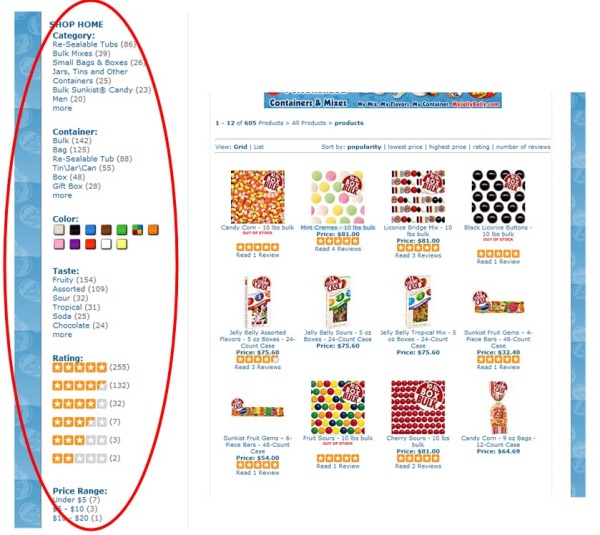Refinements or facets, are one of the most important ways to address the myriad ways your online visitors can search your site. They allow visitors to narrow down search results based on certain product or content characteristics, so that searches can be completed in less time.

But how do you choose which refinements to use? Do you mirror your product and catalogue structure, and run the risk of creating un-useful refinements? Or do you create refinements visitors are interested in? And in this case, which are they? By making a plan for determining which refinements to display and how to display them, you can find the happy medium – that is, the refinements that meet the needs of your customers, and that mirror your product and content choices. In this two-part series, we’ll cover best practices tips for both understanding what refinements to include, and how best to display them.
Which refinements to include?
The first step in choosing refinements is to examine the content that is indexed in your site search, and how this content is structured or broken down. For instance, your content might include product pages, blog posts, video, help-desk information, and social media content. Each type of content will have its own unique structure, which will dictate how you create refinements. For example, the structure for products could include price, category, brand, color, size, in-stock items, and so on – it all depends on your particular mix of products.
In some cases, structure can be inherited from other data. For example, products may have customer reviews, which in turn have ratings, and perhaps user-generated tags. Blogs may have structure such as author, date published, tags, and comments. These structures will provide you with a list of possible refinements to include in your site search.
Another way to uncover possible refinements is to examine popular keywords in your site search reports to see how many people are searching with refinement-related terms, like colors or gender (e.g. “men’s blue parka”). Another good source: SEO traffic reports from your analytics package, which give you an overview of what people are requesting from search engines.
Keep in mind that it’s not necessary to make every possible refinement available to your customers. Too many refinements will confuse the user, and some of the more obscure refinements will likely not get used very often. Have some conversations with your customers and ask them how they would like to be able to search and refine on your site. After these conversations, you may decide that some refinements will be displayed only after the visitor has selected another facet – for example, after people select a category, they’ll be able to select a subcategory.
In some cases, you may not have the data to provide the refinements. For example, customers of an online furniture store may want to be able to refine their search results by room. To add this facet, you need to add a “room” field to your product database. This can be an intensive process, so you should make sure such a facet adds value.
In next month’s newsletter, we’ll offer some advice on how to display refinements within site search results.








2 thoughts to “Create refinements that make your site search more user-friendly, increase customer engagement”
Pingback: Organize and display refinements to streamline the site search experience : SLI Systems Newsletter
Pingback: When Implementing ‘Searchandising’ Best Practices, Test, Test and Test Again : SLI Systems Newsletter
Comments are closed.